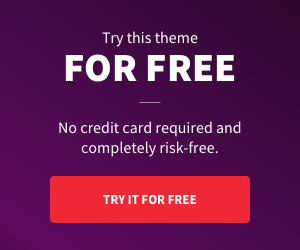Commentary
There’s a famous experiment involving jams. Not problems, and not what old people call music, but the third thing: sweetened and thickened fruit spreads.
Study 1: Jam Selection Experiment
The experiment was conducted in a gourmet food store with tasting booths offering either 6 or 24 varieties of jam. Approximately 60 percent of shoppers stopped to peruse the extensive-choice display, while 40 percent approached the limited-choice display. Surprisingly, however, 30 percent of those who sampled from the limited selection made a purchase (a code on the back of the coupon told researchers which display each eventual buyer had seen), compared to only three percent from the more extensive selection. More choices generated more interest, but significantly less action.
Study 2: Essay Topic Selection Experiment
College students were offered (PDF) either six or 30 topics for an optional essay assignment. Students given six topics were more likely to complete the assignment and produced higher-quality essays than did those given 30 topics. Choice can be demotivating.
Study 3: Chocolate Selection Experiment
Participants were asked to choose a chocolate from either a selection of six or 30 options. Those with six options reported greater satisfaction with their choice and were more likely to select chocolate over monetary compensation than those with 30 options.
Together, these three studies suggest a model of how we decide. While a larger array of choices may initially attract interest, too many choices can ultimately reduce motivation to make a decision and decrease satisfaction with the chosen option.
Brand names: People may shop around at first, but they also use brand names and reviews to settle on a choice. In an actual grocery store, with brand names of recognizable products, people don’t spend hours in the cereal aisle. They go, look for a second at their favorite cereals, and then make a choice. Easy peasy. But then why are there so many choices? That leads to point two.
BUT: Social Media?
The argument above, while correct (IMHO), requires quite a bit of machinery to operate in the background. The commercial system, once mature, maintains a profit-and-loss test, and nurtures the use of brand name and reputation to simplify and curate choice. What looks like chaos is in fact well-ordered: jars of jam are expensive to manufacture and ship, and the shelf space has an opportunity cost, so that only jam people want is provided (at least over time).
None of those conditions exist, at least not yet, in the wild world of social media. The costs of manufacture and distribution are negligible, and the opportunity cost of “shelf space” on the internet is just the competition for attention, because platforms are nearly free.
- Technological Advancements: The rise of the internet and digital tools has lowered barriers to entry for creators, leading to an explosion of content across various media forms.
- Unbundling: Traditional media packages, such as albums or cable TV bundles, are being broken down. Consumers now have the freedom to select individual pieces of content, tailoring their media consumption to personal preferences.
- Abundance of Content: This unbundling has resulted in an overwhelming abundance of content, making it challenging for consumers to discover high-quality material amidst the vast options available.
- Absence of Gatekeeping: The role of traditional gatekeepers, like editors and producers, has diminished. In their place, algorithms and social media trends have become the new curators—determining what is important—and verifiers—determining what is true. The consequence is that the most prominent content is disconnected from profit-and-loss calculus, as well as quality ‘buyer’ feedback.
These trends in media production and consumption have significant economic implications. While more creators can share their work, monetizing content has become complicated. On one hand, anyone can now publish content and charge whatever audiences will pay through services like substack and Patreon. On the other hand, the enormous flood of new content raises the level of competition to earn a sustainable income.
The shift towards unbundled content consumption can lead to fragmented cultural experiences, as shared media experiences become less common. In particular, as legacy print and television outlets have lost their stranglehold over reader attention and ad dollars have moved to more precisely targeted platforms on social media, the traditional mainstream media have lost their authority.
Eventually, as Kevin points out, there may emerge new models of curation, verification, and monetization to navigate this landscape, but for now abundance and unbundling are getting worse, not better.
Views expressed in this article are opinions of the author and do not necessarily reflect the views of The Epoch Times.
Source link








































Add comment